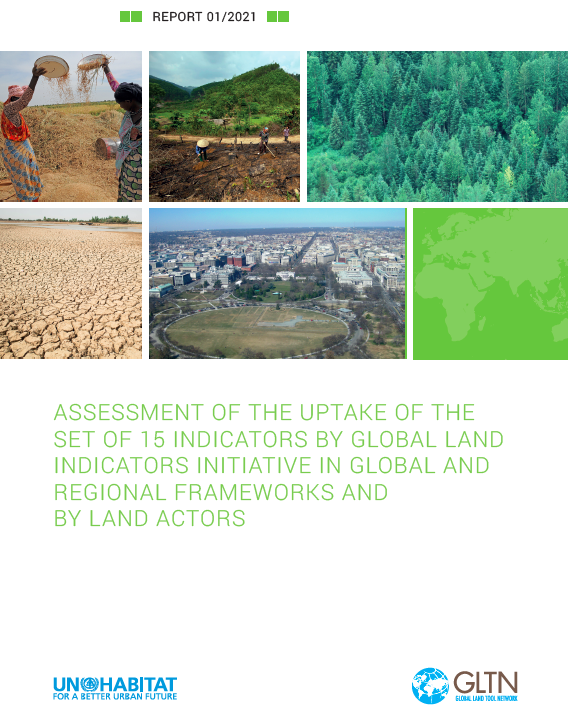Resource information
The Global Land Indicators Initiative (GLII) platform was established in 2012 through the joint effort of United Nations Human Settlements Programme (UN-Habitat), the World Bank and Millennium Challenge Corporation with the aim of making global-scale monitoring of land governance a reality by 2021.
The purpose of this study is to better understand how GLII land indicators are being used by GLII partner and non-partner organizations, and by extension, to appreciate the impact of GLII indicators on the larger regional and global effort to promote monitoring of land tenure security for men, women and youth.
This is done in this report by answering four questions: (1) Are GLII partner organizations using all or selected indicators; (2) Are the indicators (or partnerships) helping to influence development of new agreements or measurement tools by partner organizations; (3) Are non-partner organizations using the indicators; and (4) Are the indicators and data collected on them being used to develop new programmes or inform policies and law to promote land tenure security.
The assessment was carried out through a literature review of various documents, including GLII publications; the collection of primary data from a sample of GLII partner organizations and collaborators through an online survey questionnaire; and in-depth interviews. GLII partner organizations that responded to the survey are most frequently using GLII’s first five indicators for land tenure security—largely as these relate to monitoring of Sustainable Development Goals (SDGs) targets 1.4 and 5A.
The findings reveal that there is weak evidence to suggest that GLII’s indicators are helping to influence the development of new agreements or measurement tools (although one organization, the International Land Coalition, noted that GLII indicators formed the basis for 7 (seven) of their indicators now being used by the Global Land Governance Index (LANDex). There is insufficient evidence to determine if non-partner organizations are using GLII indicators; however, as noted inter alia, GLII’s greatest impact has been on influencing the development of SDG land targets 1.4 and 5A, and with this effort, non-GLII partners may be collecting land data that will impact global efforts to improve land tenure security. Finally, there is some, although limited, evidence to suggest that partners are using GLII indicators to develop advocacy and other programmatic interventions.


